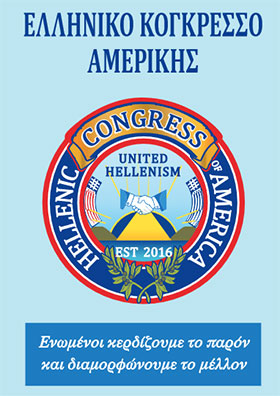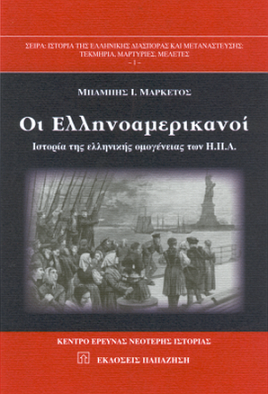Τikas is remembered as a symbol of the struggle for labor rights in the United States as the leader of the Ludlow miners.

Illustration: Greek Reporter
Louis Tikas is remembered as a symbol of the struggle for labor rights in the United States. As the leader of the Ludlow miners went on strike over the inhumane working conditions at the Rockefeller mines.
He was assassinated by the Colorado National Guard, the bloodiest event of the attack, on April 20, 1914. Nineteen people died during the massacre, including two women, eleven children and a member of the National Guard.
Ilias Athanasios Spantidakis was born in Loutra of Rethymno, Crete in 1886. At the age of 20 he immigrated the U.S. never to return to Greece. He lived in Denver where he worked in the steel mills.
He became an American citizen in 1910 and opened a cafe on Market Street in Denver, a “Greek town” with 240 Greek residents. Next to his cafe, was the head office of the local organization of the “Industrial Workers of the World”, the “Wobblies” and he became fascinated by their cause.
By the end of 1912 he was an organizer for the United Mine Workers of America (UMWA), in between he worked as a miner-strikebreaker in Colorado’s Northern Field but ended up leading a walkout by 63 fellow Greeks at the Frederick, Colorado mine.
Tikas was chased from the field, shot and wounded by Baldwin-Felts detectives as he escaped through the back door of a boarding house in Lafayette.
Udlow miners’ demands
On September 23, 1913, the great strike in Ludlow began, with the participation of 13,000 miners. The strikers demanded the following.
- To shop from any store of their preference.
- Go to any doctor they wish and not exclusively to the doctors of the company.
- Recognition of their union
- Establishment of an eight-hour work day
- Law enforcement of the State of Colorado regarding mining safety
To abolish the script and the system of guards of the company that made the workers’ camps like concentration camps. Head of the strike were John Lawson and Louis Tikas, supported by Cretans who worked at the mine.
The strikers set tents in the area at a strategic point in order to prevent the strike-breakers from entering the mines. In October, the strike camp functioned as a city: five hundred men, three hundred and fifty women, four hundred and fifty children, a Greek bakery, a Greek coffee shop.
The company had requested the intervention of the National Guard and the Governor of Colorado had agreed. The conflicts were violent.
The Rockefeller family that owned the mines demanded for people of their own to go there in National Guard uniforms and break the strike along with the National Guard. The governor agreed to that too. But the strikers did not back down.
Ludlow Massacre
By April 1914 the cost of maintaining the troops led to a reduction in the National Guard presence, resulting in increased violence. On Sunday, April 19, 1914, the National Guard encircled the Ludlow camp and deployed a machine gun on a bluff overlooking the strikers.
The book Blood Passion, where journalist Scott Martelle explores the little-known story of the Ludlow Massacre. Credit: UCCS Kraemer Family Library/CC BY-NC-SA 2.0
Although no one knows exactly what instigated the violence, some accounts suggest that officers of the National Guard demanded that the miners turn over at least one individual, possibly a striker or even a hostage that they were holding, but the miners refused.
The National Guard then opened fire on the camp, initiating a pitched battle that lasted throughout the day.
According to accounts, Tikas had been lured out to discuss a truce. He went to meet the head of the National Guard, Captain Karl Linderfeld, holding a white flag. The two met on the hill and talked for a while.
Then eyewitnesses said that the officer hit Tikas in the head with the butt of his rifle. The rifle broke in two smashing Tikas’ skull. Men of the National Guard then shot Tikas’ lifeless body.
The troops opened fire at the camp and a real battle ensued. As the strikers ran out of ammunition, they retreated from the camp into the surrounding countryside. Women and children, hiding from the bullets that strafed the camp, huddled in cellars that had been dug underneath their tents. In the evening the National Guard men soaked the tents in kerosene and set them on fire.
In one cellar 11 children and 2 women were found burned and suffocated. In all, 25 people were killed during the Ludlow Massacre, 3 of whom were National Guard troops.
When the miners returned to their burned camp a few days later, they found Louis Tikas’ body. His funeral took place on April 27, with thousands of workers following the procession.
In retaliation for the massacre, miners attacked anti-union town officials, strikebreakers, and the mines, taking control of an area about 50 miles long and 5 miles wide. As many as 50 people died during the reaction to the Ludlow Massacre.
To avoid further escalation of violence, U.S. President Woodrow Wilson sent in federal troops to restore order. Unlike the National Guard, the federal troops were impartial and kept strikebreakers out of the coal mines. The strike ended on December 10, 1914. The heroic struggle of Ludlow miners won the UMWA 4,000 new members.
The Greek workers’ hero Louis Tikas
Today in Trinidad, Colorado, there is a statue honoring the heroic Greek mine worker that was built next to the Southern Colorado Coal Miners Monument in, on June 23, 2018.
The statue was built on the intiative of the Foundation of Hellenism of America, with the financial support of Greek Americans. “The Greek immigrant Louis Tikas changed the course of American history and labor laws,” says the official Foundation of Hellenism of America website.
The documentary “Palikari: Louis Tikas and the Ludlow Massacre” by director Nikos Ventouras and scriptwriter Lambrini Thoma released in 2014, tells the story of the brave Greek American who put a founding stone for better labor laws in the United States. Watch below:
Greekreporter.com









Σχόλια Facebook